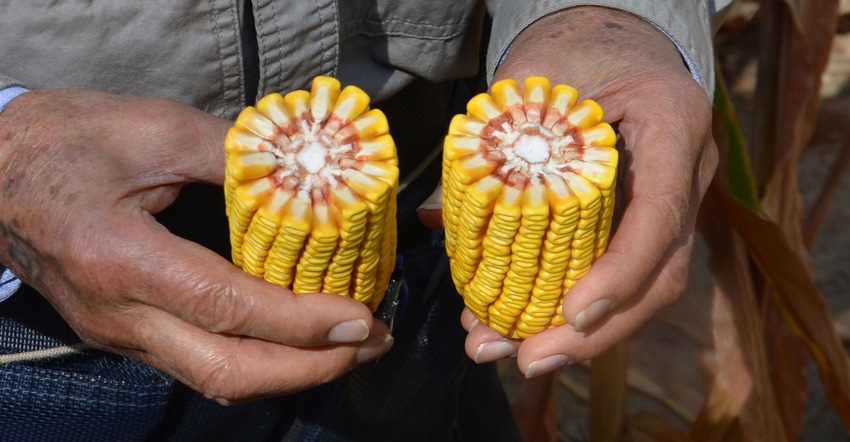
According to estimates, USDA is still expecting healthy corn yields in the eastern Corn Belt, despite lots of heat and areas of drought at various times during the season. Some state yields are predicted to push up to 190 bushels per acre or higher. Is there really that much corn out there?
Variability in weather conditions in 2022 makes blanket statements difficult, notes Dave Nanda, a plant breeder and director of genetics for Seed Genetics Direct, Jeffersonville, Ohio. If you want to know what kind of yields to expect on your farm, visit each field. In fact, visit each major part of each field. Differences in soil type alone can influence yield, especially in a year with variable environmental conditions.
While you’re checking yield, pay attention to what else is going on in the field, Nanda says. “Determine if your crop is approaching black layer,” he says. “Early-planted corn and earlier-maturity hybrids should be close to black layer. Later-planted corn may not finish until early October. See where the milk line is and determine if a black layer is forming yet at the tip of each kernel.”
Grain moisture at black layer is typically 32% to 35%, but can vary, Nanda adds. Once the black layer forms, no sugars can move in or out of kernels.
“Pay attention for signs of disease,” he says. “Southern rust and tar spot can come in late. If you find significant disease lesions, weight it against how long before black layer to determine if you need to do something.”
Yield estimates
Here are examples from three different fields in the eastern Corn Belt. In the first two examples, corn was planted May 11 and endured lots of heat and drought. Example 1 represents a light-colored, lower-organic-matter soil in an eroded field. Example 2 is from a field with more productive soils and more water-holding capacity. Example 3 was planted at the end of May on lower-organic-matter soils with no tile. That field caught later rains, and likely won’t reach black layer until early October.
Different hybrids were planted in each field. Rains returned in August in all three fields, which should help grain fill.
Example 1. Checking in several 1/1,000-acre strips, you find 32,000 ears per acre, and ears with 16 rows of kernels, and 30 kernels per row. Drought apparently shortened ear length. The math is: 32×16×30=15,360 kernels divided by 85, the fudge factor for kernels per bushel, with average kernel size. So, 15,360/85=180.7 bushels per acre. Figuring 10% either way puts yield in a range of 160 to 200 bushels per acre.
Example 2. You find 34,000 ears per acre, with 16 rows per ear, 35 kernels per row and deep kernel depth. Switch to 80 for the kernel fudge factor. The math is: 34×16×35=19,040. Divide that by 80 to get 238, which at plus or minus 10% equals a range of 215 to 265 bushels per acre.
Example 3. In this later-planted field, there are 30 ears per acre, 15 rows per ear with 38 kernels per row. Kernels are shallow, so use 90 as the factor. The math is: 30×15×38=17,100. Divide that by 90 to get 190 bushels per acre. With a 10% plus or minus factor, the range is 170 to 210 bushels per acre.
About the Author(s)
You May Also Like




